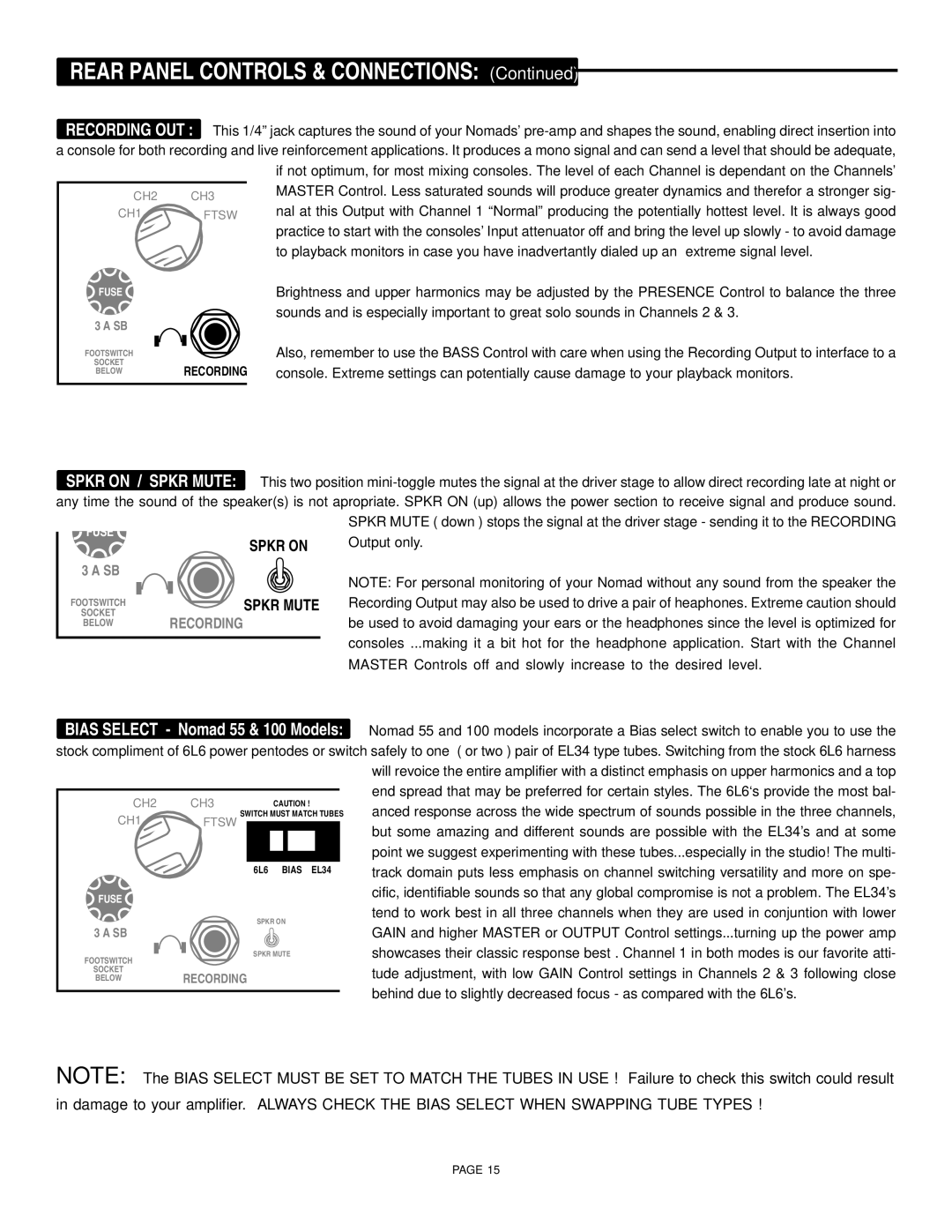45, 55, 100 specifications
Mesa/Boogie, a name synonymous with innovation in the guitar amplification world, has carved out a niche in the hearts of musicians with its formidable lineup of amplifiers. Among these, the Mark series stands out, particularly with models like the Mark 100, 55, and 45. Each model brings its unique flavor and versatility, allowing players to craft their sound with precision.The Mesa/Boogie Mark 100 is a powerhouse in the 100-watt category. It boasts multiple channels, allowing guitarists to switch between clean, crunchy, and high-gain tones effortlessly. One of its standout features is the onboard EQ, which facilitates fine-tuning for different guitars, pickups, and musical styles. The Mark 100 is engineered with Mesa's signature Dyna-Watt technology, providing a dynamic response at various volume levels without sacrificing tonal quality. This responsiveness makes it ideal for both live performance and studio recording, as it yields rich harmonic overtones and a wide dynamic range.
Moving to the Mark 55, this model offers a refined approach with 55 watts of power. It retains many features present in the Mark 100 but is more accessible for players who prefer a slightly lower wattage. The Mark 55 excels in mid-gain settings and is popular among blues and rock guitarists. Its Dual Rectifier circuitry can dial in everything from smooth, bluesy overdrive to tight, aggressive rock tones. The amp also incorporates a versatile effects loop, providing seamless integration with pedals and processors, making it a favorite among pedal enthusiasts.
The Mark 45, perhaps the most compact of the trio, brings 45 watts of power to the table, making it a versatile choice for players seeking portability without compromising tone. It retains critical features such as multiple channels and a powerful EQ section while being lighter and easier to transport. The Mark 45's sweet spot is found in its ability to deliver rich, saturated tones at manageable volume levels. Often favored for intimate gigs and home recordings, its versatility allows players to explore genres from jazz to metal with equal flair.
All three Mesa/Boogie amplifiers utilize high-quality components designed for durability and peak performance. Their construction is robust, ensuring reliability on stage or in the studio. With advanced features such as power scaling and tube rectification options, musicians can tailor their sound precisely.
In summary, the Mesa/Boogie Mark 100, 55, and 45 each present guitarists with distinctive tonal characteristics and features that enhance playability and sound. From the powerful performance of the 100 to the compact yet versatile 45, these amplifiers deliver the high-quality, rich tones that Mesa/Boogie is renowned for, catering to the diverse needs of players across genres.

